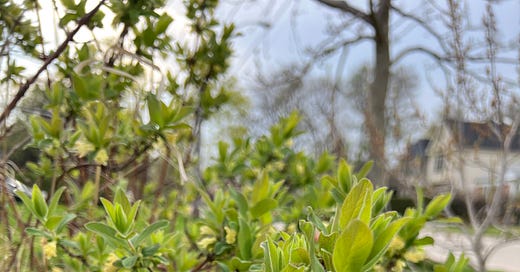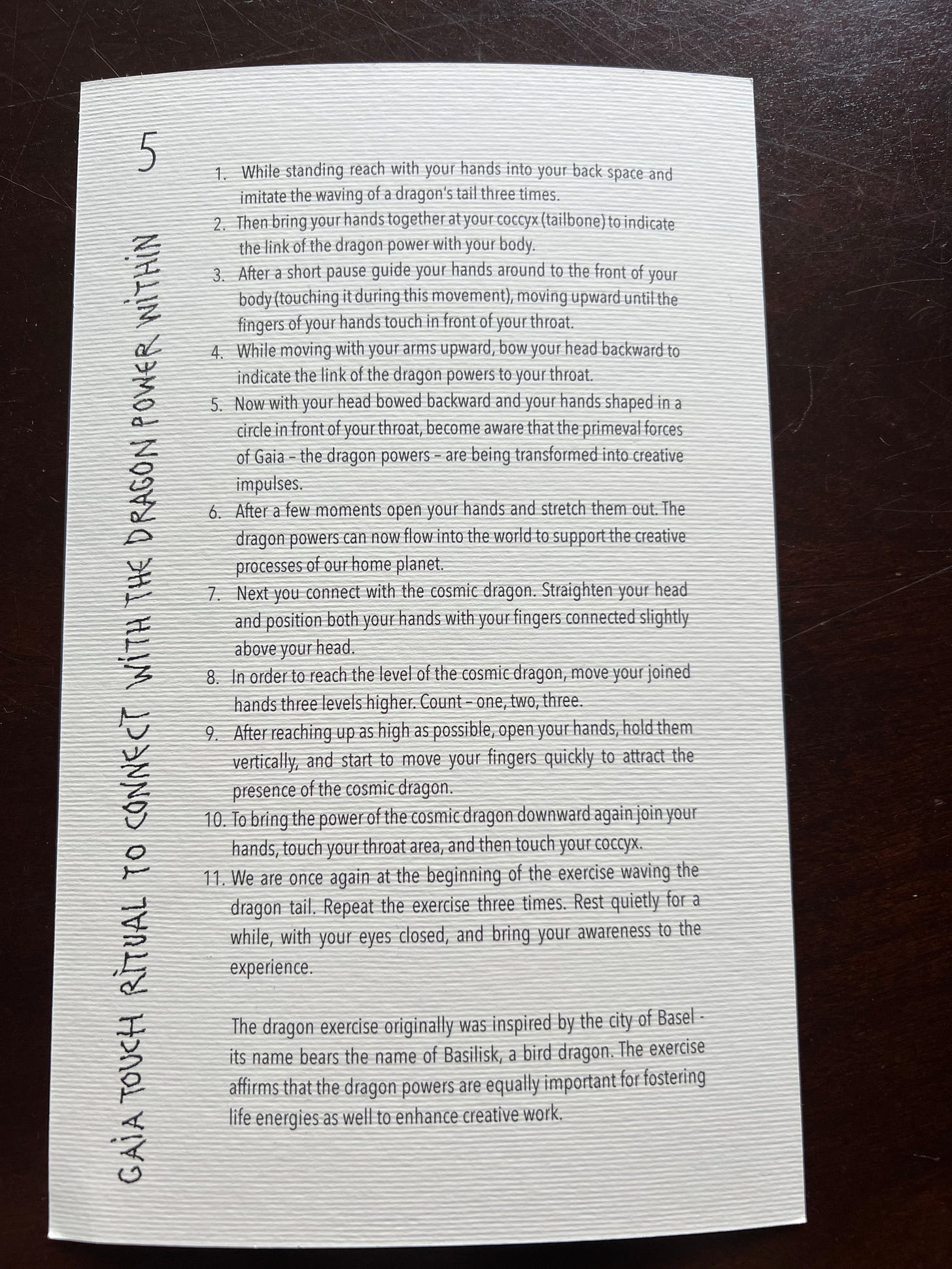Hello! Happy Beltane! It’s been awhile. There are many new followers and I wanted to say hello and re-introduce myself and this space.
What is Cosmic Dive Bar? Well, it’s a newsletter read aloud in the dimly lit dive bar of my dreams. Similar to a dusky Irish pub, it’s made of old stone and barn beams, and smells of beeswax candles, fresh bread and roast beef dinner. There’s a thick red velvet curtain hanging on the door to keep the cold drafts and riff raff out, and when I part the curtain, I enter a room filled with friends.
It’s personal here. I pull up a plush covered stool, grab a cider and share what’s on my mind: what cool projects are popping up, what world school adventures await, and the trials and tribulations of teaching children how to grow healthy food in healthy soil using biodynamics.
Some of you may have followed me here from the Josephine Porter Institute’s Stack, and I am so grateful that you did. My work there consists of writing a variety of articles, but principally the monthly “Cosmic Journal”.
For the Cosmic Journal, I follow the lunar cycle from New Moon to New Moon, and compare the Celestial Planting Calendar, Stella Natura and Maria Thun’s calendar, as well as comb through the
’ ever-expanding catalogue of resources, to hopefully come up with a helpful monthly list of to-do’s. I see it kind of like ’s Gardening World segment, “What To Do on the Weekend”, but specific to biodynamic tasks.I am LOVING writing over there, but I have some cool ideas around how to better utilize this Cosmic Dive Bar space and Substack’s features. I’m really into exploring the Chat feature. I want to get in there and say hello, get to know who is really reading this newsletter besides my mom (hi mom), what your interests are and what you’d like to learn from this space. I’m also super excited to fill you guys in on a cool biodynamic experiment I am co-creating with an incredible New Zealand-based biodynamic gardener and compost queen,
.Our experiment is using an method that was created in 1945 by Maye Bruce, a biodynamic gardener in the Cotswolds, UK. It explores using dried flowers stirred aka “activated” in rain water, then injected into a vegetable waste compost pile to improve compost quality and make rich, good smelling biodynamic compost in six to eight weeks, without the need to add animal manure.
We’ve been accepted to present our work at the Goetheanum’s International Biodynamic Research Conference (IBDRC 2025) in — can you believe it? — the Cotswolds at the end of August! We’re looking for participants around the world to join our experiment and Katrina has created a beautiful website where we can all log on to record our observations and share photos.
To join our Floral Compost Activator Experiment, click here!
As a Waldorf homeschooler, May Day is celebrated today and our plan was to collect flowers for the experiment and do a Fire & Flower ritual to honour Rhiannon, but it’s freezing, there is a severe thunder and wind storm risk, and it feels ominous and dark.
Instead, we decided to intuitively draw a Gaia Touch card, and received the ritual to connect with the Dragon Power within. The Gaia Touch cards contain the first ever complete collection of exercises and rituals by renowned Geomant and UNESCO Artist for Peace, Marko Pogačnik. Over the last 20 years of working as an Earth-Healer, Marko received these exercises from different Elementary Beings at diverse locations around the world. It’s a beautiful collection and you can find it here.
My daughter loved this exercise and it inspired an hour of creative play as dragons that fed both our souls, as well as our creative impulses. Perhaps we all need to embody our Dragon Power as we enter uncertain times.
I leave you with a few images of flowers I will be drying for our experiment, taken on April 29th, 2025, the beginning of a new lunar cycle.
Be well
Love Kate









Gosh I wish I could come and hang out with you and your flowers. Love seeing your garden blossoming, considering we first started chatting about Maye Bruce's work when you were surrounded by snow.